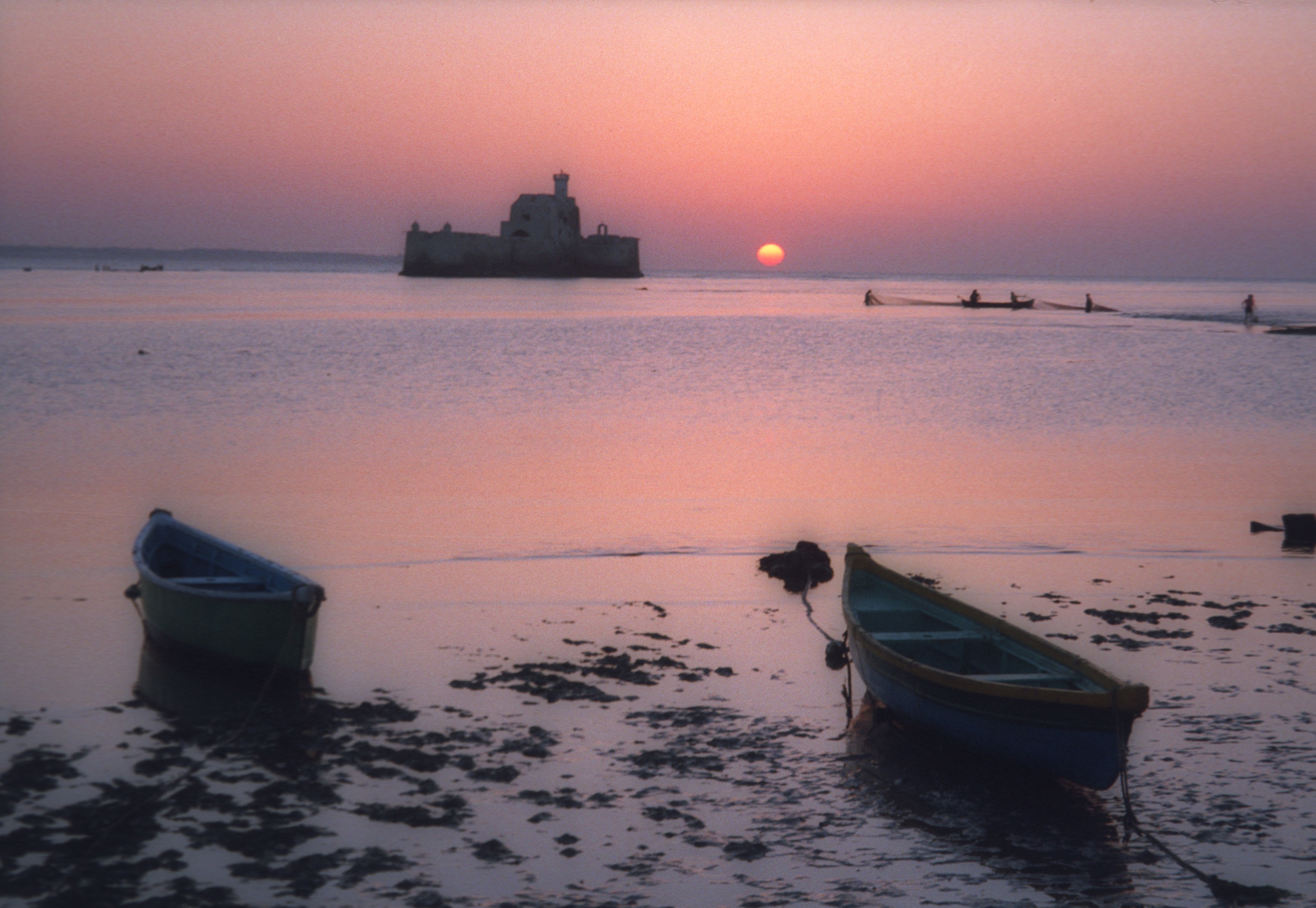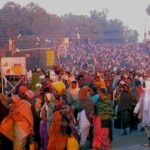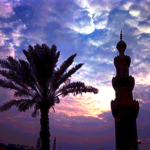I had never known that the island of Diu, the old Portuguese colonial outpost, was haunted by ghosts until three Indian schoolboys took me on an informal tour of the island’s only boarding school, which sits next to St. Paul’s church on the edge of Diu Town.
“After this we’ll show you a different church,” said Vimal, the extroverted one, as we walked through the cramped dormitory. “It’s not far from here, and it has many ghosts inside.”
“Ghosts?” I said.
“Yes. That church isn’t a church anymore. Now it’s for ghosts.”
I’ll admit I had a hard time hiding my skepticism, though the history of the windswept Arabian Sea outpost offers plenty to inspire the macabre imagination. Along the southern stretch of the island, for instance, a Tower of Silence marks the site where generations of Zoroastrians (who first arrived from Persia in 766) left their dead to be eaten by birds. More gruesomely, the narrow avenues of Diu Town were witness to horrific war carnage over the centuries — perhaps most vividly in 1509, when victorious Portuguese sailors offshore hacked up their Indian prisoners, primed their cannons and fired body parts over the city walls.
Even Diu’s moment in the ancient epic Mahabharata, India’s massive national poem, has a gory twist: When the Hindu hero Krishna arrives at the island to have his way with the wife of a slain demon king, his seductions are cut short when the dead king’s dismembered head floats home on a magic disc.
Like the more celebrated Goa, Diu was a Portuguese trading outpost dating back to the 1500s, part of that seafaring empire’s attempt to control the lucrative spice trade from the East. Both were wrested from Portugal by the Indian Armyin 1961.
But while Goa has grown into a don’t-miss stop on the world-traveler circuit, a round-the-clock party on palm-fringed beaches, Diu remains pretty much as it has been for centuries: a sleepy enclave of whitewashed Portuguese buildings filled with a weird and fascinating mix of peoples, ringed by limestone cliffs and empty stretches of sand. It gets a smattering of backpackers, but its party scene is pretty much limited to vacationing Indians.
It was because of Goa (or, rather, because Goa dominates the Portuguese-Indian consciousness) that I’d decided to tack unsung little Diu onto the end of a month-long sojourn through the western Indian states of Rajasthan and Gujarat. For me, Diu was not just an island but a mystery that needed to be solved.
Why, I wondered, had Diu remained so anonymous while Goa enjoyed international renown as a classic post-colonial travel destination? What quirks and distinctions set Diu apart from its more famous southern counterpart? Why had the Portuguese come to this remote Indian island in the first place?
At times, answering those questions was simply a matter of chasing phantoms.
“What do they look like?” I asked the schoolboy named Vimal as he led me through the old dormitory.
“They look like people. But some of them don’t have arms and some don’t have heads.”
Intrigued, I followed the boys outside and started up the low hill toward the whitewashed facade of Sao Tome church. Inside, as my eyes adjusted to the dim sanctuary, I began to pick out the phantoms: Theresa hovered near the front door, wearing a star-sequined cloak under her crown of thorns; Jerome slumped sadly along the wall, bald and thin-armed. In the back, Mark looked like a pious Muslim in his heavy beard; nearby, Chrysostom seemed to be contemplating his six missing fingers.
The ghosts weren’t ghosts, of course, but carved wooden statues of Catholic saints. Long since abandoned by regular services, Sao Tome church now served as Diu’s haphazard community museum. Fourteenth-century Jain temple carvings sat on tables alongside Hindu images and Portuguese furniture. Plaster shaken off by a recent Gujarat earthquake still dusted the floor. A grizzled Indian caretaker dozed on a chair in the corner.
The wooden saints were the main attraction, however, and, schoolboy misnomers notwithstanding, it was easy to see why my 12 year-old guides called the 200 year-old figures “ghosts.” Rough-hewn, with wide staring eyes, even Our Lady of Good Hope looked haunted.
Handing Vimal my camera, I walked behind the altar. There, flanked by angels, a death-pose Jesus lay prostrate under a clean white sheet, his wooden head coiffed with soft strands of human hair. I struck a casual pose as my young Indian friend walked back toward the front of the church, surrounded by the remnants of a presence he was born too late to fully understand.
Finally finding the right angle, Vimal leaned forward and snapped the picture, trapping two dozen wide-eyed wooden ghosts in an instant of light.
In a way, my visit to Diu had been an ongoing encounter with ghosts — and many of the telltale phantoms on the Hindu island weren’t even Portuguese.
In Diu Town, for instance, I’d found that certain neighborhoods were full of Indians who looked like Africans. Called siddi, this community was descended from local Indian Muslim merchants who, during the height of trade on the Indian Ocean centuries ago, lived (and kept local wives) in African ports.
Moreover, all the hotels in Diu Town were owned by Ismaili Shiites, whose Hindu ancestors had been converted to the faith some 700 years ago by Persian missionaries (who, resourcefully, had arrived in India claiming that the sect’s founder was the 10th incarnation of the god Vishnu). Over the years, Diu was variously a trading center for the Mauryans, a capital for the Chavada dynasty, a refuge for Rajput rajas and a military outpost for the Ottoman Turks.
Though physically isolated from mass culture, Diu Town was beginning to show the telltale quirks and ironies that come with globalization. In the public square, for instance, the old Portuguese whipping post bore a poster that read: “Learn Karate! (Sinsei: Kiran P. Prajapati).” In Diu’s outdoor market, one could choose between baseball caps embossed with either a New York Yankees symbol, a John Deere patch or (against all probability) a logo touting Northern ArizonaUniversity’s department of nursing. Not far from my hotel, a man sold packets of incense that he claimed could be burned in accordance with any religion. In the spirit of ecumenism, the incense packets were adorned with the picture of an oversized U.S. $100 bill.
Thus, I was not too surprised to find a half-dozen tiny Indian nuns singing African American gospel songs (“I Get So Thrilled With Jesus”) when I walked into St. Paul’s church.
Said to be the finest example of Portuguese architecture in India, St. Paul’s church felt a bit out of place on the small island. It was hard to imagine how Diu’s small Christian community could ever have been able to muster enough members to fill the sanctuary, where pigeons now fluttered in the deteriorating rafters. Whenever the service switched from English to Portuguese, my attention wandered to the intricately carved rosewood altars and the scallop-edged water stains that had crept across the powder-blue ceiling patterns.
After the service, Father Aquileo Gomes greeted me outside the church. Short and round-faced in his vestments, he intermittently stopped to chat with his parishioners as he told me about Diu’s Christian minority.
“It’s a small community,” he said, “and it keeps getting smaller. Out of 30,000 people on the island, only about 60 Christian families are left. At one time, there were 11 churches in Diu, but this is the only church that still holds regular services. The Sao Tome church is a museum now, and the St. Francis of Assisi church has been turned into a hospital.”
Father Gomes stopped for a moment to have a word with some nuns before continuing. “The few young Christians we have in Diu don’t like to stay here. There are no job opportunities here, no industries. Diu will never be like Goa, where the Europeans come to us as tourists. So the young people apply for a Portuguese passport and try to find work in Europe. Most of them don’t come back.
“There will always be a Diu church,” Father Gomes added, with an ironical wobble of his head. “But you might have to go to Lisbon to find the parishioners.”
Perched off the southern tip of Gujarat’s Kathiawar peninsula, Diu doesn’t seem like the sort of place that would have ever attracted European attention in the first place. Largely limestone, the 25-square-mile island has little tillable land and almost no sources of fresh water. Aside from salt pans along its northern tidal flats, it has no profitable dry-land industries. Were it not located along the trade routes of the Arabian Sea, Diu might not even have permanent settlements apart from a few fishing communities.
Nevertheless, the Portuguese made designs on transforming Diu into a strategic outpost not long after their ships sailed into Indian waters 500 years ago. Determined to control the profitable Indian spice market — and already engaged in a fierce colonial power-struggle with the Ottoman-allied Sultan of Egypt — the Portuguese saw Diu as the key to controlling the northern Arabian Sea.
It took 25 years after their capture of Goa in 1513 for the Portuguese to gain their fortress in Diu, which became part of a fortified trade network that included similar outposts in Malacca, Macau, the Red Sea island of Socotra, and Ormuz on the Persian Gulf. A massive, Portuguese-built fort still dominates the far tip of the island, full of rusty cannonballs and faded grave markers.
Throughout the 16th century, no merchant ship could safely sail along this trade network without a Portuguese cartaz pass, which ensured that duties were paid on all cargo, and that certain items (such as spices) were not carried by non-Portuguese ships. Portugal became so rich from the monopoly that the king of France began to derisively refer to his Portuguese counterpart as “the grocer king.”
This period proved to be Diu’s commercial golden era, as tax incentives and a stake in Portugal’s far-flung trade empire attracted merchants from all over western India. Mansions, markets and grand churches sprang up as Diu Town grew to host 50,000 residents. Since the Portuguese didn’t have much success in converting Diu’s Hindus to Christianity, Goan converts were brought in to fill the churches. Tortoise-shell jewelry made by Diu craftsmen — a colonial synthesis of Indian and Mozambican craft — became all the rage in Lisbon.
Then, in the early years of the 17th century — just as Diu was beginning to look a tad cosmopolitan — Dutch and English ships began to appear on the Arabian Sea. By the late 1630s, the Dutch were blockading Goa and Portugal’s trade monopoly in the East was shattered. Regional commerce shifted down the Indian coast to Surat, and Diu faded into obscurity.
As with its merchants and its Christians, the island of Diu has not been all that successful at keeping foreign tourists around — despite the fact that guidebooks have been recommending it for years as a sleepy alternative to Goa. Granted, it can be difficult to get a hotel room on the island during the Christmas festival season, and Diu’s pleasant beaches are said to be busy with backpackers during the cooler winter months. But my early spring arrival found the place mostly devoid of foreigners.
Thus, Diu’s fledgling tourist industry is primarily set up to serve Indian visitors from Gujarat. Because it is illegal to buy or sell alcohol within Gujarat state — and because Diu (as a post-colonial Union Territory) is not subject to Gujarati law — a good number of these tourists visit Diu simply to enjoy the novelty of getting drunk. As a result, weekends in Diu have been known to take on the air of an adolescent beer bash.
Seeking to avoid the weekend revelers at my hotel — and with my time in Diu running short — I journeyed out to Nagoa Beach, which has earned its reputation as one of the finest beaches in western India. As I walked along the gold sand on the long, half-moon bay, sari-clad women and naked children frolicked in the surf. The men sat in groups at beachside restaurants, smoking cigarettes and sipping rum cocktails in the shade of the hoka palms. In the distance, beyond the limestone cliffs that fringed the headlands, fishing boats bobbed in the brown waters of the Arabian Sea. Choosing a direction at random, I made for the eastern headland.
Exploring the intimate contours of Diu on foot had already proved to be one of my favorite activities on the small island. In the north of Diu, the tidal flats had been a great setting for watching the herons, oystercatchers, egrets and flamingos that pass through with the seasons. On the western tip of the island, Vanakbara village had provided me a colorful (if filthy) setting to stroll Portuguese-designed back-alleys, explore ruined churches and villas and watch the time-honored routines of Diu’s koli-caste fishing community. Inland, I’d spent hours climbing through the ancient, maze-like limestone quarries that scarred the low ridges.
At Nagoa Beach, I hiked to the fringe of the bay, where angular tidal pools (created when the Portuguese quarried the stone there generations ago) pulsed with crabs and anemones. I spent a mesmerizing hour in the tidal pools before backtracking up the beach to buy a bottle of water at a storefront that grandly billed itself as the “Diu Seashell Museum.” At first I thought this was just a kitschy front to sell tourist trinkets, but when I walked inside I realized that the place was obviously a realization of someone’s obsession. Painstakingly labeled and presented, thousands of seashells from around the world cluttered the airy, split-level room.
Hand-lettered descriptive posters detailed intriguing facts about shell life (“The Sexuality of Seashells”), as well as minutia that nobody apart from a devotee could have appreciated (“General Scheme of the Internal Anatomy of a Mollusk”).
The seashell devotee, I discovered, was a sharp-eyed, white-bearded retired sea captain named Devjibhai Fulbaria. Setting aside a half-completed placard (“Respiration and Circulation of a Bivalve”), the old sailor leaped up from his chair to take me on an informal tour of the museum. “I traveled the world for 42 years collecting these shells,” he told me, “but I opened this museum just three months ago. I want to make it into the best seashell museum in the world.”
He paused for a moment to shoot me a knowing look. “Of course my wife thinks I’m crazy.”
As we made our way from exhibit to exhibit, I asked Captain Fulbaria about the blue-black tattoos that colored his forearms. “This is Sanskrit,” he said, pulling up his shirtsleeves to give me a better view. “These letters spell out Ram nam — ‘the name of Rama.’ I got these tattoos when I was quite young. Sailors do this so their body can be identified if they die at sea. To make a proper funeral, we must know whose body it is. Without proper funerals, we believe that the spirits of the dead will not be happy. And that means bad luck at sea.”
“What if you can’t find the body at all?”
“Then we make a body for the dead man out of banana leaves. We give him oyster shells for eyes and seeds for teeth. Then we take the body and burn it.” Captain Fulbaria paused to wag a finger at me. “I can see that you want to smile at this, but it’s no joke. It’s our tradition.”
“Don’t the spirits know the difference between a body and banana leaves?”
The old sea captain shrugged. “I guess ghosts can’t see so well.”
In the end, meeting the likes of Captain Fulbaria helped me realize that Diu’s mysteries didn’t need to be solved so much as encountered and experienced. Indeed, Goa might have had better hotels and a stronger post-colonial identity, but Diu’s organic charms — quiet beaches, curious tales, random encounters — owed much of their very existence to the island’s obscurity.
Their home long ago invaded by the Portuguese, then mostly forgotten by generations of outsiders, Diu’s ghosts had quietly become a part of the island’s appeal.





